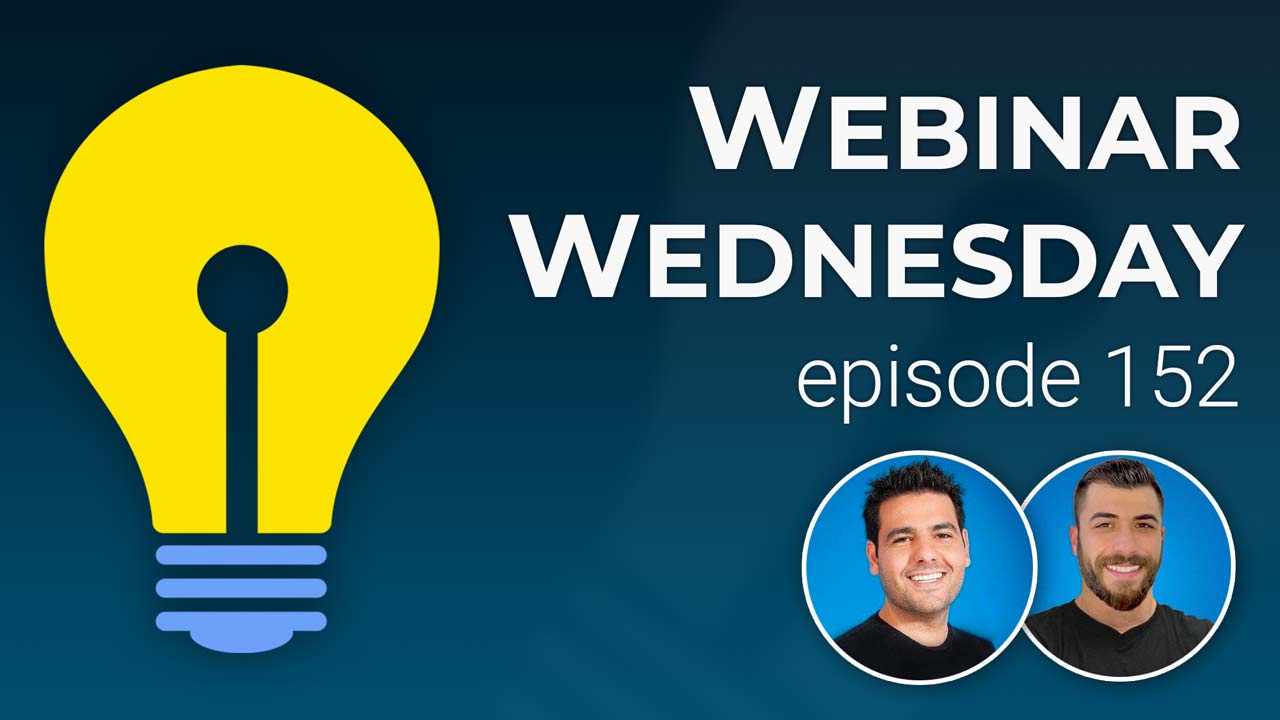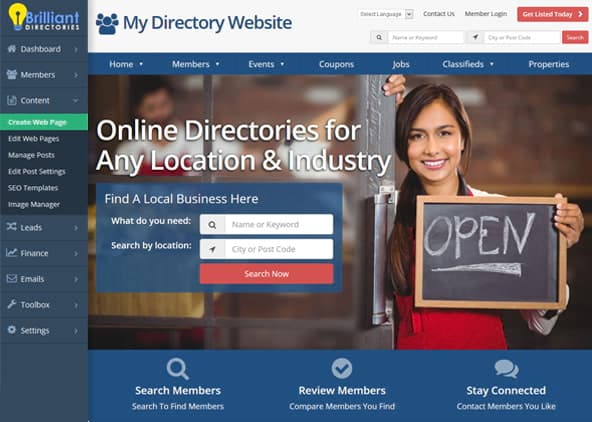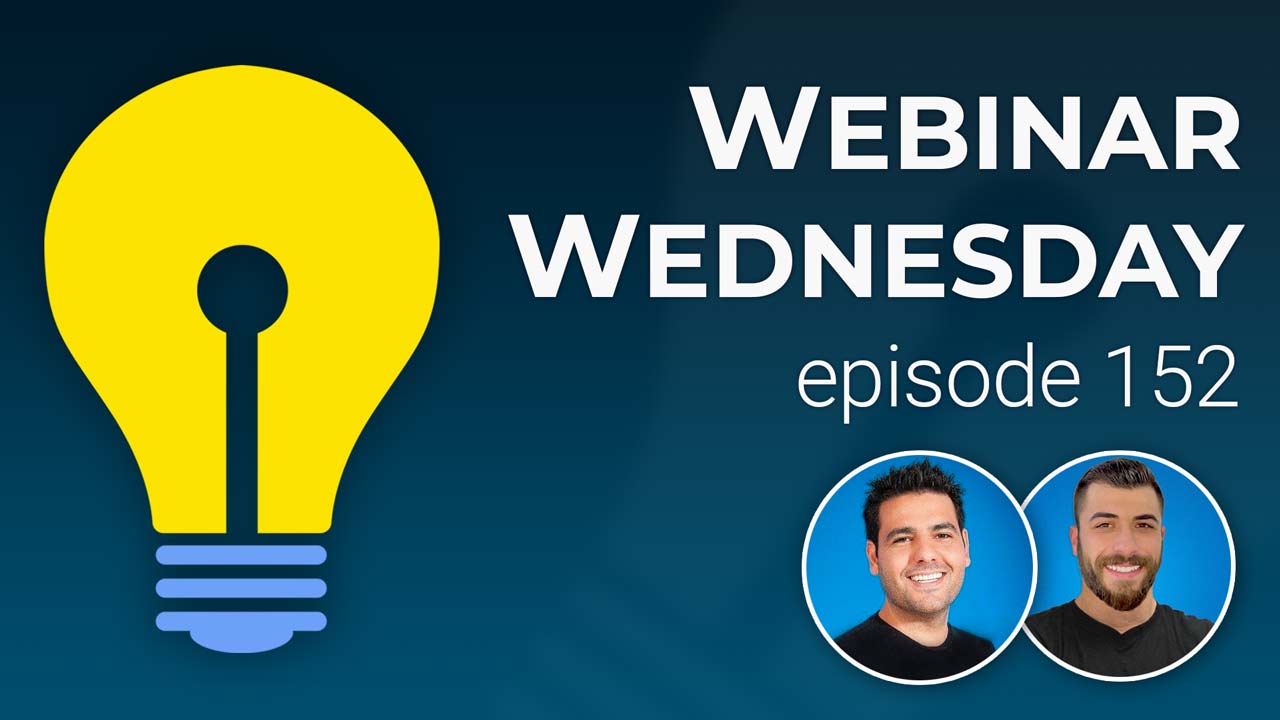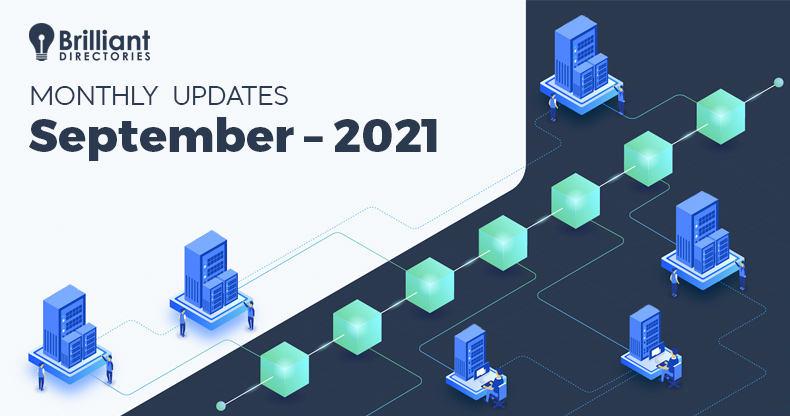
Key Topics:
- 2:56 – Spam: Additional Protection Against Known Spam Characters
- 5:04 – Speed: Faster Page Loading in Admin Area (more to come)
- 5:26 – Segmenting: Identify Incomplete Profiles via the Admin Area Only
- 8:06 – Search: Sort Member Search Results by Most and Least Likes – Bookmark Counter add-on
- 10:09 – Menus: Checkbox Option to Hide Individual Menu Item
- 11:43 – Over 100+: Updates, fixes and Feature Releases in February
- 12:04 – Finance: Local Timezone Setting to Select Time to Process Payments
- 12:39 – Finance: Bulk Action Settings for the New Search Subscriptions Page
- 12:58 – Import: Image Support When Importing Posts via CSV File… and Later with Zapier
- 13:30 – Tons More: Speed, security, quality-of-life features and exciting new releases on the way!
- 14:05 – How to define what constitutes an “incomplete profile”?
- 15:22 – How to Re-Engage Your Inactive Members
- 16:09 – The Cost of Losing Active Members
- 17:50 – Strategies to Re-Engage Inactive Members
- 22:48 – Best Practices for Re-Engagement Emails
- 26:52 – Using ChatGPT to Write Emails
- 29:18 – How to Use Variables In Email Templates
- 30:38 – Incentive Inactive Members
- 33:09 – Benefits of Re-Engaging Inactive Members
- 35:57 – Email Sample 1
- 37:27 – Email Sample 2
- 38:35 – Email Sample 3
- 39:57 – Require the About Member field for complete profiles?
- 41:35 – Can an entire Smart List be emailed at once?
- 42:42 – Feedback for using ChatGPT to write emails
- 44:04 – How to track/offer 2nd tier affiliate bounties?
- 46:39 – How to see bounced email addresses from a sent newsletter?
- 47:39 – How to require users to log in to leave a review?
- 50:08 – Alerts for members who have expired credit cards? – Billing Reminder Emails add-on
- 53:19 – Can email variables be used in the subject line?
- 53:26 – Suggestion to make member login token an email variable
New Features
Coming Soon
Tip of the Week
Questions & Answers
Email Template 1
Subject: We Miss You! Come See What You’ve Missed
Hi [Member Name],
I noticed that it’s been a while since you last logged into our community. We hope everything is going well!
Just wanted to remind you that we’re here for you and have some great benefits you can take advantage of. Here are some things you might have missed out on:
[List benefits or features that are relevant to the member]
[Mention updates or new features that have been added since their last visit]
You’re truly a valuable part of our community and hope you’ll come back to join us soon. Log back in today and let’s catch up!
Best,
[Your Name]
Email Template 2
Subject: Was it something we said?
Hi [Member Name],
It’s been a while since we’ve seen you around our community! I wanted to check in and see how you’re doing.
We’ve made some updates and changes recently that we think you’ll love, including:
[List some new features or improvements that have been made]
[Mention relevant incentives or discounts that the member could receive for coming back]
Our members mean everything to us, so I hope you’ll log back in soon and see what we’ve been up to! We’re here to support you and help you grow your business in any way we can.
Best,
[Your Name]
Email Template 3
Subject: We Want You Back… Here’s What You’ve Missed
Hi [Member Name],
Hope this email finds you well! It’s been a while since you last logged into our [Website Name], and we’ve been thinking about you.
I wanted to remind you about some of the amazing benefits you’ve been missing out on, such as:
[List a few key benefits or features that are relevant to the member]
[Mention testimonials or success stories from other members that could inspire the member to come back]
We know life gets busy, but we don’t want you to miss out on any of the opportunities that [Website Name] offers. Log back in today and see what you’ve been missing!
Best,
[Your Name]

 AI-Generated Transcript – Please excuse any inaccuracies
AI-Generated Transcript – Please excuse any inaccuracies
Spam: Additional Protection Against Known Spam Characters (00:02:56)
- It is recommended to enable a new security setting on English language or Spanish language websites to provide additional protection against known spam characters. (00:02:58)
- This setting can be found in the admin area under the Integrations tab in the general settings, where a list of keywords to block can be edited or added to prevent spam submissions. (00:03:20)
- The security feature blocks forms containing certain keywords without notifying the visitor of the block. (00:03:42)
- It is advised to block spoof characters, which are homoglyphs that resemble Latin characters but are used by spammers to bypass filters. (00:03:53)
- While these characters are valid in languages like Greek and Russian language, they are often used for spam on English sites, so it is recommended to enable this protection for English sites. (00:04:26)
- The list of blocked keywords and characters can be customized by adding or removing entries as needed. (00:04:55)
Speed: Faster Page Loading in Admin Area (more to come) (00:05:04)
- Efforts are being made to improve the speed of the admin area, with the first two phases already implemented (00:05:04).
- The goal is to make the admin area faster, allowing users to work more quickly and efficiently inside the back end of their site (00:05:07).
- Further improvements are expected to be showcased in the next couple of weeks, likely in the next webinar, with the promise of a “Lightning Fast” admin area (00:05:09).
Segmenting: Identify Incomplete Profiles via the Admin Area Only (00:05:26)
- The ability to require members to have complete profiles before they can be found in search results is a feature that has been previously covered, and it can be managed through the general settings under search settings for member search results, where there is an option to require complete profiles (00:05:27).
- The definition of a complete profile can be customized to include specific pieces of data such as first name, last name, company name, and other individual pieces of data, and members who do not meet the criteria will not show in the search results (00:05:28).
- A new setting has been added to allow searching for complete profiles from within the admin area only, which enables admins to identify incomplete profiles without restricting members from public search results (00:05:41).
- With this new setting, members who do not have all the required fields completed will still show in the search results, but admins can personally identify who has a complete or incomplete profile and create a smart list of incomplete profiles (00:05:45).
- The smart list of incomplete profiles can be used to send emails notifying these individuals to complete their profiles, and it provides a way for admins to track and manage incomplete profiles without affecting the members’ visibility on the site (00:05:51).
- The new setting provides convenience to admins trying to identify incomplete profiles without punishing members in terms of visibility on the front end of the site, and it was added based on suggestions from the Facebook group (00:05:54).
- The feature to create a smart list of incomplete profiles can be used to educate members on what is required to complete their profiles, and it can be saved for later use (00:06:06).
- The smart list can be named, such as “incomplete profiles”, and it can be used to target specific members with notifications and updates (00:06:10).
- The overall goal of this feature is to provide admins with a way to manage and track incomplete profiles without restricting member visibility, and it is a useful tool for identifying and engaging with inactive members (00:06:19).
Search: Sort Member Search Results by Most and Least Likes (00:08:06)
- The ability to sort members in search results based on who has the most likes versus the least likes is related to the Bookmark counter add-on, which is an extension that shows the actual count when a member or a post has received a like or thumbs up (00:08:10).
- The Bookmark counter add-on allows users to sort members based on who has the most or least likes or bookmarks, and this feature can be accessed by searching for “counter” in the design settings (00:08:26).
- To enable the sort options, users need to ensure that the Bookmark counter add-on is enabled in the design settings, which can be done by searching for “counter” and setting “enable bookmark counter” to yes (00:09:37).
- Once the Bookmark counter add-on is enabled, the sort options “most likes” and “least likes” will be displayed under the sort results, allowing users to sort members based on their like count (00:09:04).
- The sort options “most likes” and “least likes” are text labels that can be changed to match the terminology used on the website, such as “most saves” or “most bookmarks”, by modifying the text labels in the design settings (00:09:53).
- The Bookmark counter add-on provides a quick example of how the sort options work, by showing a list of members with their like counts, and allowing users to sort them by most or least likes (00:08:51).
Menus: Checkbox Option to Hide Individual Menu Item (00:10:09)
- A checkbox option to hide individual menu items is available in the menu manager, allowing users to toggle main menu items on or off without deleting them, and this feature is useful for seasonal promotions or temporary additions to the main menu (00:10:09).
- The hide checkbox is located in the menu manager and can be used to hide individual menu items, which will turn the item a pink-red color when checked, and the changes can be saved to remove the item from view (00:10:22).
- The hidden menu item can be easily restored by unchecking the hide checkbox, making it a convenient option for managing menu items that are only needed temporarily, such as seasonal promotions (00:10:49).
- If a parent menu item is hidden, all nested or child menu items under it will also be automatically hidden, providing a way to easily manage complex menu structures (00:11:22).
- The hide checkbox feature applies to any menu in the menu manager, including the main menu, and can be used to hide or show menu items as needed, providing flexibility in managing website menus (00:10:41).
Over 100+: Updates, fixes and Feature Releases in February (00:11:43)
- February had over 100 updates, fixes, and feature releases, with the majority of them originating from support inquiries and suggestions made in the Facebook group (00:11:45).
- The updates, fixes, and feature releases were largely driven by user feedback, with specific items being implemented as a result of user suggestions (00:11:53).
- Some new features and items are scheduled to be released soon, including the ability to set certain options, which have been mentioned previously (00:12:00).
Finance: Local Timezone Setting to Select Time to Process Payments (00:12:04)
- The local timezone setting allows for control over the time of day when scheduled and recurring payments are processed, determining whether payments are captured at a specific time, such as 12:01 am or in the middle of the afternoon (00:12:05).
- This feature is particularly beneficial for users in overseas locations, including Australia and New Zealand, who currently have their recurring payments collected towards the end of the day (00:12:23).
- The implementation of this setting aims to fix the issue of late-day payment collections for users in these regions, instead collecting payments at a more suitable time for their respective time zones (00:12:27).
- The search subscriptions will be affected by this change, with payments being collected at a more appropriate time for the users’ time zones (00:12:38).
Finance: Bulk Action Settings for the New Search Subscriptions Page (00:12:39)
- The new search subscriptions page will feature bulk action settings, allowing for the bulk cancellation of subscriptions, as well as changes to the next bill date and amount, which is expected to be particularly helpful when updating the subscriptions of multiple members simultaneously (00:12:40).
- This functionality is designed to provide a lot of help, especially in situations where many members’ subscriptions need to be updated at the same time (00:12:51).
- The bulk action settings will enable users to efficiently manage and modify subscriptions in bulk, including canceling subscriptions, changing the next bill date, and adjusting the amount (00:12:45).
Import: Image Support When Importing Posts via CSV File… and Later with Zapier (00:12:58)
- The ability to import posts with image support is currently in development and is expected to be available soon, allowing users to import events, jobs, and articles via a CSV file (00:12:58).
- The current import functionality via CSV file supports importing titles and the body of the content, but it does not yet support importing images (00:13:06).
- The introduction of image support will enable users to import images along with the posts, enhancing the overall import functionality (00:13:12).
- Following the implementation of image support, the functionality will be integrated with Zapier, allowing users to automate the import of various post types, including events, real estate listings, and more (00:13:19).
- The integration with Zapier will provide users with a more streamlined and automated process for importing posts, making it easier to manage and update content (00:13:24).
Tons More: Speed, security, quality-of-life features and exciting new releases on the way! (00:13:30)
- More updates are coming soon, including improvements to speed, security, and quality-of-life features, with the team working diligently to implement these changes (00:13:32).
- The team at Brilliant Directories appreciates feedback and suggestions from users, and is grateful for their input in shaping the development of new features (00:13:36).
- Viewers are invited to use the “raise your hand” feature to ask questions about the new features, provide feedback, or make comments about upcoming releases that they are excited about (00:13:44).
- A user named Colette is acknowledged, although she appears to be self-muted, and a greeting is exchanged with Jason, who is doing well (00:13:56).
How to define what constitutes an “incomplete profile”? (00:14:05)
- To define what constitutes an incomplete profile, website owners can customize the settings to determine which fields are required for a profile to be considered complete, such as a name, top-level category, profile photo, and address, by default (00:14:09).
- The settings for defining a complete profile can be found under general settings and search settings, where a comma-separated list of required fields can be created and customized to include additional information such as last name, company name, or other captured fields (00:14:31).
- Website owners have the flexibility to add as much or as little information as desired to the list of required fields, allowing them to tailor the definition of a complete profile to their specific needs and determine which records are complete or incomplete (00:15:05).
- The customization options for defining a complete profile provide a way to specify the required fields and determine which profiles are incomplete, allowing for more accurate tracking and management of member profiles (00:15:14).
How to Re-Engage Your Inactive Members (00:15:22)
- Re-engaging inactive members is a crucial step that every membership or directory website owner can take, and it involves identifying inactive members and taking steps to mitigate their inactivity and bring them back to the site (00:15:28).
- Inactive members are those who are at risk of canceling their membership, and understanding this concept is important in preventing churn rate, which refers to the number of cancellations (00:15:39).
- The topic of churn rate has been discussed in previous webinars, but the focus was not on how to prevent inactive members from eventually canceling, which is the main goal of re-engaging inactive members (00:15:48).
- The process of re-engaging inactive members involves getting ahead of the curve and taking proactive steps to prevent them from becoming inactive in the first place, rather than just reacting to cancellations (00:15:57).
- Presenters will be discussing the steps that can be taken to re-engage inactive members and prevent them from canceling their membership, which is an important aspect of maintaining a healthy and active membership base (00:15:31).
The Cost of Losing Active Members (00:16:09)
- Losing active members results in lost potential revenue from subscription fees, upselling, and other products and services, as well as reduced engagement and activity on the website and community as a whole (00:16:10).
- The loss of active members leads to an increased churn rate, which is the number of cancellations, and it is costly to acquire new members to replace those who have been lost (00:16:41).
- Identifying inactive members ahead of time and proactively reaching out to them to bring them back and reactivate them is a key goal, as it is more affordable to keep existing members than to seek out new ones (00:16:57).
- The cost to acquire a new member is significantly higher than the cost of trying to keep a current member on board, with some estimates suggesting it is 10 times more expensive (00:17:16).
- Retaining existing members is more affordable than seeking out new members, as the customer acquisition cost is higher for new members than for trying to retain existing members (00:17:44).
- It is essential to always keep in mind the importance of retaining existing members and to prioritize efforts to keep them active and engaged, rather than solely focusing on acquiring new members (00:17:49).
Strategies to Re-Engage Inactive Members (00:17:50)
- To re-engage inactive members, it is essential to first identify who they are, which can be done by searching through members based on profile completion and last login date within the website admin area (00:17:52).
- Inactive members can be proactively reached out to through re-engagement emails that are personalized, possibly including incentives such as promotions, discounts, or credits to encourage them to return to the website (00:18:28).
- Personalization of emails can be achieved by including the member’s name and referencing their last login date, making the email seem more personal to the member (00:19:00).
- Incentives can be offered to members, such as promotions, discounts, or credits, depending on the community and services being offered (00:19:27).
- Requesting feedback from inactive members can help understand why they haven’t revisited the website and what features or improvements they would like to see, which can be implemented to prevent members from becoming inactive (00:20:06).
- Creating a segmented list of inactive members can be done by searching for members with a last login date within a specific time frame, such as a month or a year, and then creating a smart list of these members (00:20:50).
- A smart list of inactive members can be used to send targeted newsletters or emails to try to re-engage them, and can also be exported for further analysis (00:22:23).
- Inactive members can also be identified by searching for members with incomplete profiles, and then creating a smart list of these members to target with re-engagement efforts (00:22:36).
Best Practices for Re-Engagement Emails (00:22:48)
- Re-engagement emails should have an attention-grabbing subject line that sparks curiosity and evokes emotion to encourage recipients to open the email. (00:22:50)
- Personalizing email content by including the member’s first name and relevant information, such as the last login date, can make the email feel more personal and less generic. (00:23:47)
- Creating a sense of urgency with clear calls to action and deadlines can incentivize members to respond, even if the primary goal is to prevent cancellations rather than immediate profit. (00:24:23)
- Providing valuable content in re-engagement emails, such as links to relevant podcasts, videos, or articles, can pique members’ interest by highlighting what they might have missed. (00:25:13)
- Examples of re-engagement emails were created using ChatGPT, and there was an interactive segment where participants could request live email generation during the webinar. (00:26:19)
Using ChatGPT to Write Emails (00:26:52)
- To re-engage inactive members of a membership website, an email can be created using ChatGPT, with the goal of making it funny, short, and providing a $50 credit incentive if they log in within the next 48 hours (00:27:07).
- The email can be written in a lighthearted tone, starting with a greeting and expressing how much the member is missed, along with their contributions, such as funny cat memes, and offering the $50 credit incentive to encourage them to log in again (00:27:57).
- ChatGPT can generate different versions of the email, including a shorter one, which can be modified to match the specific offerings of the membership website, with the main goal of being concise and enticing the member to return (00:29:04).
- The email can be further shortened to just two lines, still conveying the message of missing the member and offering the $50 credit incentive for logging in within 48 hours, making it a quick and easy way to re-engage inactive members (00:29:10).
- ChatGPT can be used to regenerate responses and create new versions of the email, allowing for experimentation with different tones and approaches to find the most effective way to re-engage inactive members (00:28:22).
How to Use Variables In Email Templates (00:29:18)
- Email templates can be personalized by using variables such as the user’s first name, last name, full name, company name, phone number, and other variables to create a more tailored experience for members (00:29:20).
- These variables can be found in the admin area, under email templates, and can be copied and pasted into the template to create personalized greetings, such as “hi first name”, which would fill in the member’s actual first name (00:29:22).
- By using these variables, emails can be created that mention the member’s company, location, top level category, and other relevant information to make the emails more engaging and specific to each member (00:29:36).
- The use of variables in email templates allows for the creation of dynamic and personalized content, making it easier to address members by their name and reference their specific details, which can be found in the database (00:29:45).
- The variables available for use in email templates include a wide range of options, providing flexibility and customization possibilities for creating unique and targeted emails (00:29:50).
- The process of creating personalized emails using variables is straightforward, involving copying and pasting the desired variables into the email template, making it easy to create tailored messages for members (00:30:00).
- The goal of using variables in email templates is to create a more personalized experience for members, making them feel more connected and engaged with the content, by referencing their specific details and information (00:30:10).
- The use of variables in email templates is a useful tool for creating effective and engaging emails, and can be used in a variety of contexts, such as newsletters, announcements, and other types of member communications (00:30:20).
Incentive Inactive Members (00:30:38)
- Incentivization tactics can be used to bring inactive members back, such as offering website credits, discounts, free trials, or monetary savings for their membership, which are the simplest and most obvious incentives (00:30:39).
- Providing access to exclusive content or resources can also be an effective way to incentivize inactive members, and this can include reiterating that the only way to access certain content is by being a member (00:31:06).
- Extending invitations to members-only events or webinars, whether in-person or online, can be another way to encourage inactive members to return, and can help to create a sense of community and belonging (00:31:45).
- Offering rewards for completing certain actions, such as referring friends and family or completing profile information, can provide an added incentive for inactive members to become active again, and can include rewards such as free credits or a free month of membership (00:32:08).
- The key to successful incentivization is to understand what the community finds valuable and to provide incentives that align with those values, whether it’s through exclusive content, events, or rewards (00:32:53).
Benefits of Re-Engaging Inactive Members (00:33:09)
- Re-engaging inactive members can lead to increased engagement and activity on the website, resulting in increased revenue through subscription fees or upsells, such as charging for leads, post publication, ebook downloads, or other services (00:33:11).
- Reactivating inactive members will also lead to a lower churn rate, essentially improving member retention and lowering the cancellation rate, making it easier to acquire new members as the community grows (00:33:21).
- As the community grows, it will be easier to attract new members, and gaining momentum will make it easier to continue growing the community and attracting new members, ultimately having a positive impact on the community and network as a whole (00:34:00).
- Identifying inactive members and preventing them from becoming canceled is crucial, as it is more expensive to bring in new members than to save inactive ones, and existing members become more valuable than rapidly growing with new members once a certain size of the community is reached (00:34:31).
- Operating a website with members requires two simultaneous marketing campaigns: one to attract new members and one to retain existing members, keeping them engaged and active, and it is essential to have two different channels of marketing to appeal to existing members and new members or prospects (00:34:56).
- Having a retention strategy in place is vital, as many people focus more on attracting new members, but existing members are essential to the growth and success of the community, and should be a key focus in planning a membership business or community website (00:35:11).
Email Sample 1 (00:35:57)
- The provided email sample is an example of how to re-engage inactive members by creating an emotional connection and reminding them of the benefits they can take advantage of, with the goal of bringing them back to the community (00:35:57).
- The email starts by addressing the member by name and expressing concern about their inactivity, followed by a reminder that the community is there for them and values their presence, which can be made more effective by adding a personal touch and avoiding a robotic tone (00:36:13).
- The email also aims to create a sense of fear of missing out (FOMO) by listing benefits or features that the member might have missed out on, such as updates or new features added to the website since their last visit, or spotlighting another member who is a competitor or colleague (00:36:41).
- By spotlighting another member, the email can make the inactive member feel like they want to be recognized as well, which could motivate them to return to the site and engage with the community again (00:37:01).
- The email concludes by expressing hope that the member will come back to the community soon and inviting them to log back in to catch up, making it a simple yet effective way to re-engage inactive members (00:37:18).
Email Sample 2 (00:37:27)
- The subject line of the email is made more unique to pique the member’s interest, and the email addresses the member by name, stating it has been a while since they were last seen in the community, and the sender wants to check in and see how they are doing (00:37:28).
- The email uses a mix of “we” and “I” to make the tone more personal, creating a one-on-one conversation feel, which helps to make the email a little more personal (00:37:40).
- The email mentions that updates and changes have been made recently, which the sender thinks the member will love, including new features or improvements to the website or community, as well as relevant incentives or discounts to encourage the member to return (00:37:54).
- The email expresses that members are highly valued, and the sender hopes the member will log back in soon to see what has been happening, offering support to help the member grow their business in any way possible (00:38:12).
- The email is directed towards professional members, likely those listed in the business directory, and the sender offers to help these members grow their business in any way they can (00:38:25).
Email Sample 3 (00:38:35)
- A variation of an email template is suggested to re-engage inactive members, starting with a friendly greeting and mentioning the recipient’s name. (00:38:35)
- The email should remind the recipient of the benefits they have missed by not logging into the website, including key features and testimonials or success stories from other members to provide social proof. (00:38:41)
- The email encourages the recipient to log back in to take advantage of the opportunities offered by the website. (00:39:04)
- Email templates will be shared after the webinar, and ChatGPT is mentioned as a tool that can generate creative and humorous outputs. (00:39:11)
- The session transitions to a Q&A segment, inviting participants to ask questions, with Rich being the first to engage. (00:39:27)
Require the About Member field for complete profiles? (00:39:57)
- The incomplete profile section is being utilized effectively, but there is a need to ensure that the “About Me” field is completed by members. If this section is not filled out, members should not be listed in the directory. (00:39:57)
- There should be an option to enforce the completion of the “About Me” section, and if it is not functioning correctly, contacting the support team is recommended. The correct system variable for the “About Me” field should be used. (00:40:19)
- The system variable name for the “About Me” field is identified as “about_me.” It is suggested to use this variable name to ensure the field is required for profile completion. (00:41:01)
Can an entire Smart List be emailed at once? (00:41:35)
- The concept of a smart list is used for managing incomplete or inactive members, and it is possible to email the entire group at once, rather than just individuals, by using an email template with variables such as first name and company name (00:41:36).
- To send an email to a smart list, a newsletter can be created and sent to a large number of members, up to a thousand at a time, by using the email template and variables like first name and company name (00:41:45).
- The process of scheduling a newsletter to a smart list involves going to the relevant section, clicking on “new email newsletter”, and then selecting the smart list to include, allowing users to easily send emails to a targeted group of members (00:42:17).
- The use of smart lists and email templates with variables enables users to personalize their emails and send them to a large number of people at the same time, making it a convenient and efficient way to manage and communicate with members (00:42:19).
Feedback for using ChatGPT to write emails (00:42:42)
- ChatGPT can be used to create engaging and humorous email content, with the ability to adjust the level of humor or add specific jokes, such as pirate jokes, to make the content stand out and capture attention. (00:42:43)
- It is useful for generating content ideas and can be integrated with personal creative efforts, rather than replacing them entirely. (00:43:08)
- The tool is seen as a valuable resource for educational and business purposes, with high school interns using it to assist in content creation without the risk of copyright issues associated with copying and pasting. (00:43:14)
How to track/offer 2nd tier affiliate bounties? (00:44:04)
- A question is raised about the referral system, specifically whether it is possible to track and reward the original member who referred someone, if the person they referred also refers another member, known as a second-tier bounty in an affiliate program (00:44:05).
- The process of tracking second-tier bounties is currently manual, but it is possible to track first-level referrals and then manually look one level deeper to see if any of those referrals have also referred other members (00:45:16).
- The system can show if a member was referred by someone else, and the referrer’s name will appear in a dropdown list, allowing for quick selection of the sales rep or referrer and viewing of all members they signed up (00:45:42).
- The first-level referral information can be viewed in a specific area, and from there, it is possible to continue tracking referrals to see if any of them have also referred other members (00:45:45).
- A member named Terry is recognized as one of the All-Stars in the Facebook group and thanked for his contributions, and then another member named Brian is acknowledged and given the opportunity to ask his question (00:46:21).
How to see bounced email addresses from a sent newsletter? (00:46:39)
- When sending out email newsletters, it is possible to view the campaign statistics, including the total number of emails sent, bounces, deferrals, and deliveries, after the newsletter has been sent (00:46:41).
- There is a way to identify invalid email addresses or those that bounced, which can be removed from previous lists to maintain their accuracy and effectiveness (00:46:54).
- In an upcoming release, it will be possible to click and view the specific email addresses that bounced or were invalid, allowing for more targeted list management (00:47:09).
- Additionally, users will be able to create smart lists based on email newsletter statistics, such as who opened an email, who clicked on it, and who did not open it, to enable remarketing efforts (00:47:18).
- These features will enable users to remarket to people based on their engagement with email newsletters, allowing for more personalized and effective marketing strategies (00:47:28).
How to require users to log in to leave a review? (00:47:39)
- To require users to log in before leaving a review, navigate to the front end of the website and log out of the current member account. (00:47:49)
- Edit the membership plan by accessing the profile page and adjusting the search visibility settings. Under search visibility, set the “write a review” page to members-only access, ensuring users must log in to leave a review. (00:48:39)
- After saving the changes, refreshing the page will display a message indicating that the content is for members only, prompting users to log in or become a member. (00:49:00)
- Information about undelivered newsletters is not currently visible in the admin area, but it can be accessed through the email autolog table in the database. (00:49:23)
Alerts for members who have expired credit cards? (00:50:08)
- There is no alert available for members whose credit cards are about to expire, but an alert can be sent when a member’s scheduled payment fails to be processed, indicating a potential credit card expiration issue (00:50:10).
- The billing reminder emails add-on can be used to send emails to members when a new payment is received, and to notify them of upcoming payments, with the option to send up to three past due reminder emails (00:50:49).
- The billing reminder emails add-on also allows the website owner to receive an alert for each past due reminder email sent to members, in addition to a daily summary report email of all collected, upcoming, and past due member payments (00:51:35).
- The daily summary report email aggregates the totals, showing the amount collected, pending, or past due, which can be a motivator for the website admin to take proactive steps to collect payments (00:52:12).
- Website admins can choose to receive a daily summary report email, and can also use the emails to proactively contact members with expired credit cards to update their payment information (00:51:56).
- The billing reminder emails can be customized, and the website owner can decide how many days apart to send the past due reminder emails, with the option to send a final notice before permanently closing a member’s account (00:51:14).
Can email variables be used in the subject line? (00:53:19)
- The topic of discussion is about using email variables in the subject line, which is a relevant consideration for creating effective email communications (00:53:22)
Suggestion to make member login token an email variable (00:53:26)
- A useful feature is to include a login token in emails, which allows members to directly access their dashboard, and it would be helpful to add this login token as a variable to the default list for easy access (00:53:26).
- The login token variable can be added to the list of default variables, making it easier to use and reducing the need to look it up every time (00:53:45).
- Using the percent first name variable with a small “f” results in the person’s name being displayed in small case, so it would be beneficial to make the default uppercase “F” to avoid having to change it manually (00:54:12).
- Adding a quick copy button for tools would be helpful, allowing users to easily copy and paste the information without having to manually copy and paste (00:54:43).
- The suggestions made, including adding the login token variable and making the first name variable uppercase by default, are considered good ideas and will be taken into consideration (00:54:50).
- The webinar will be posted in the Facebook group, along with email examples, and users are encouraged to join the group and subscribe to the YouTube channel for more information and updates (00:55:16).
- The next webinar will take place in two weeks, and users can join the Facebook group by going to brilliantdirectories.com forward slash Facebook and clicking the blue join button (00:55:31).














